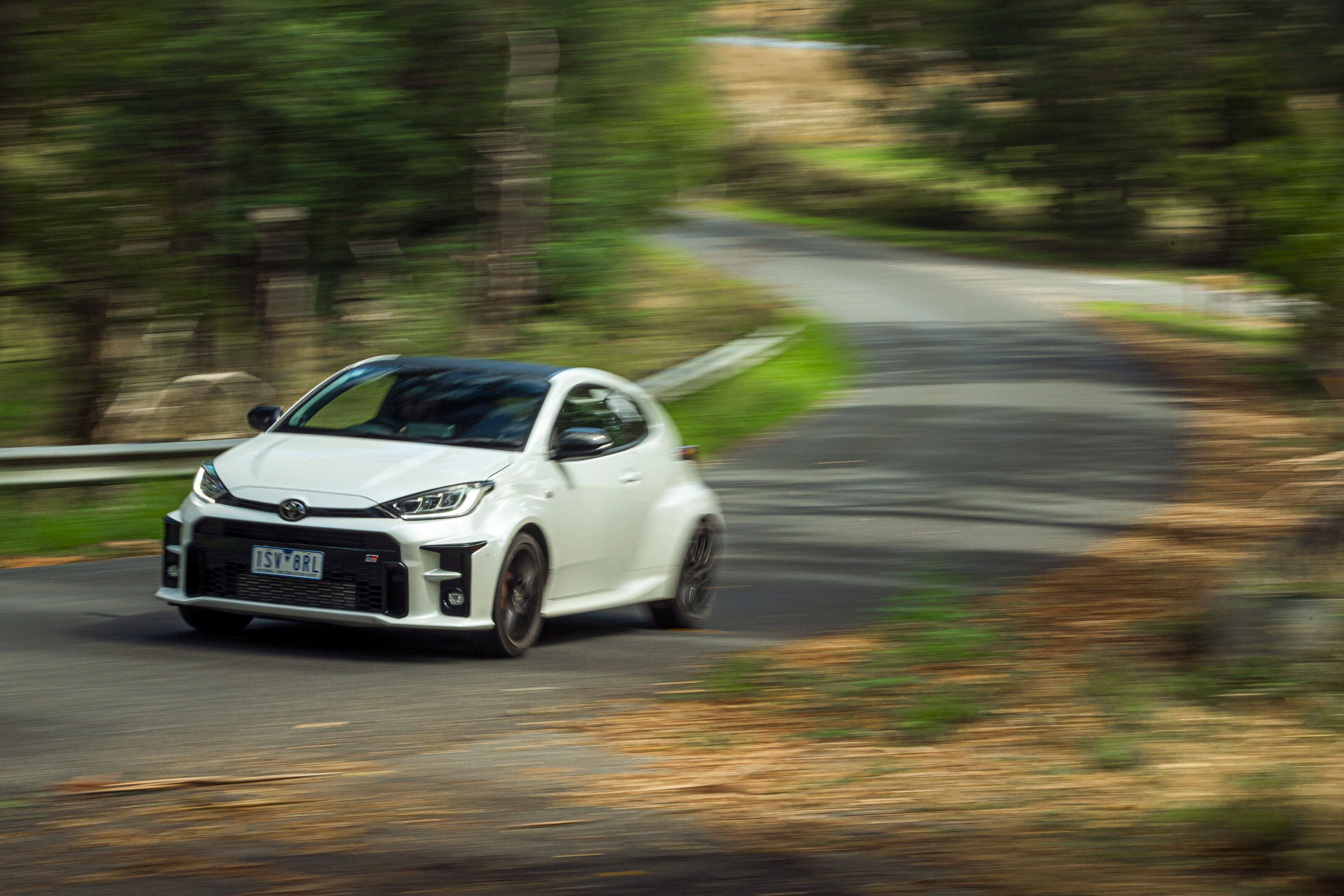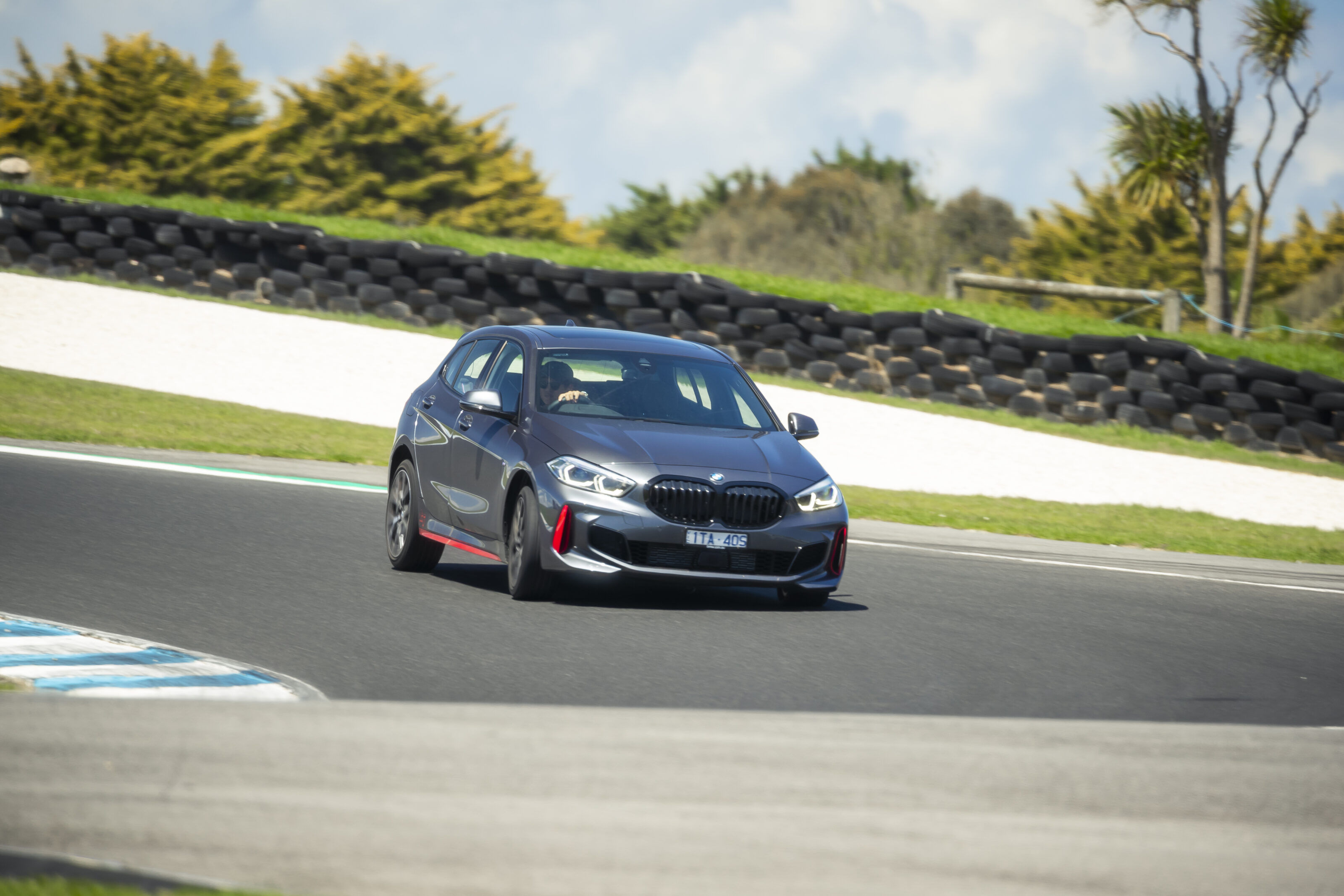Savage. That’s the word that comes to mind when the Porsche Taycan Turbo S launches down Phillip Island’s Gardner Straight. It really is like nothing else when the four Pirelli P Zero tyres are charged with getting a primed 560kW and 1050Nm to the ground effectively. It’s utterly ferocious and beggars belief how it finds purchase.
At 2.55 seconds, the Taycan Turbo S is the fastest car MOTOR has ever tested to 100km/h. However, that number was recorded at Tailem Bend in 2021, with the PCOTY ’22 marker of 2.82sec being recorded on Gardner Straight at Phillip Island. So violent is the launch control, which ups the kilowatt count by 100kW from 460kW in an overboost function, that it actually makes you ill in repartition.
Yet, it’s how the Taycan Turbo S attained its 1:45.89 lap time that’s the real genius, especially when you consider the 2295kg weight bestowed on the four-door body. In theory EVs are less complicated than conventional ICE products, however, a lot of clever trickery goes into the Taycan.
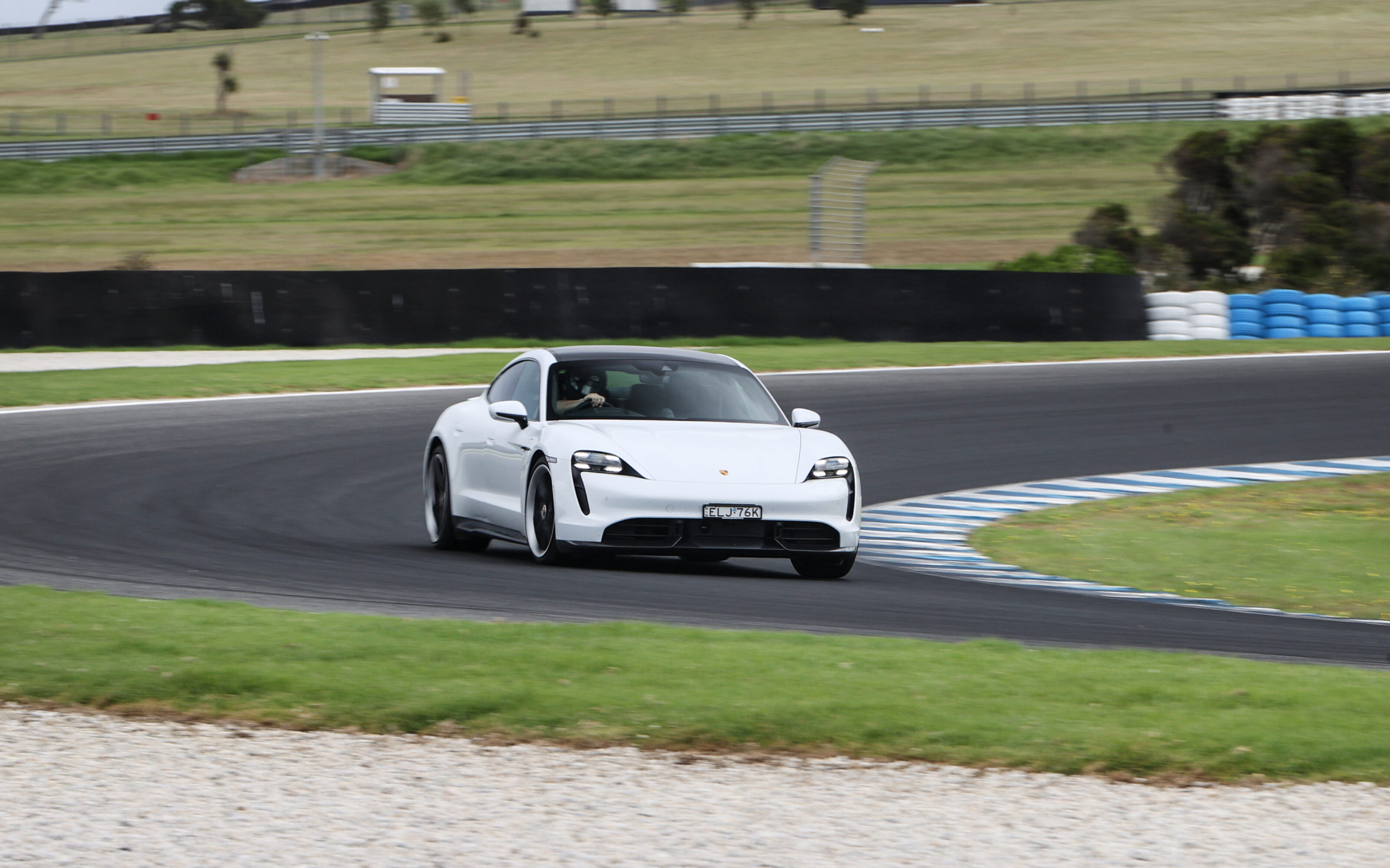
A permanently excited synchronous electric motor is placed on both the front and rear axle (essentially creating all-wheel drive) with both gaining life from a 93.4kWh (gross) battery pack located in the floor of the chassis. A single-speed gearbox resides up front, while a two-speed unit is fitted to the rear axle, affording the Taycan Turbo S staggering top speeds (we saw 249.9km/h down PI’s front straight, only 7km/h down on the GT3). It’s safe to say the Porsche has, ahem, electrifying straight-line prowess.
However, the braking forces at play, to arrest 2.3 tonne, are astronomical. In fact, as an example of how hard the re-generative braking is working, it feeds back up to 265kW into the battery pack. For reference, that’s three times that of a Tesla Model 3.
On top of that, the Porsche Ceramic Composite Brakes are nothing short of H.U.G.E, measuring 420mm up front and 410mm at the back – with 10- and four-piston calipers forward and aft. The amount of dive under hard braking is proof of the physics at play.
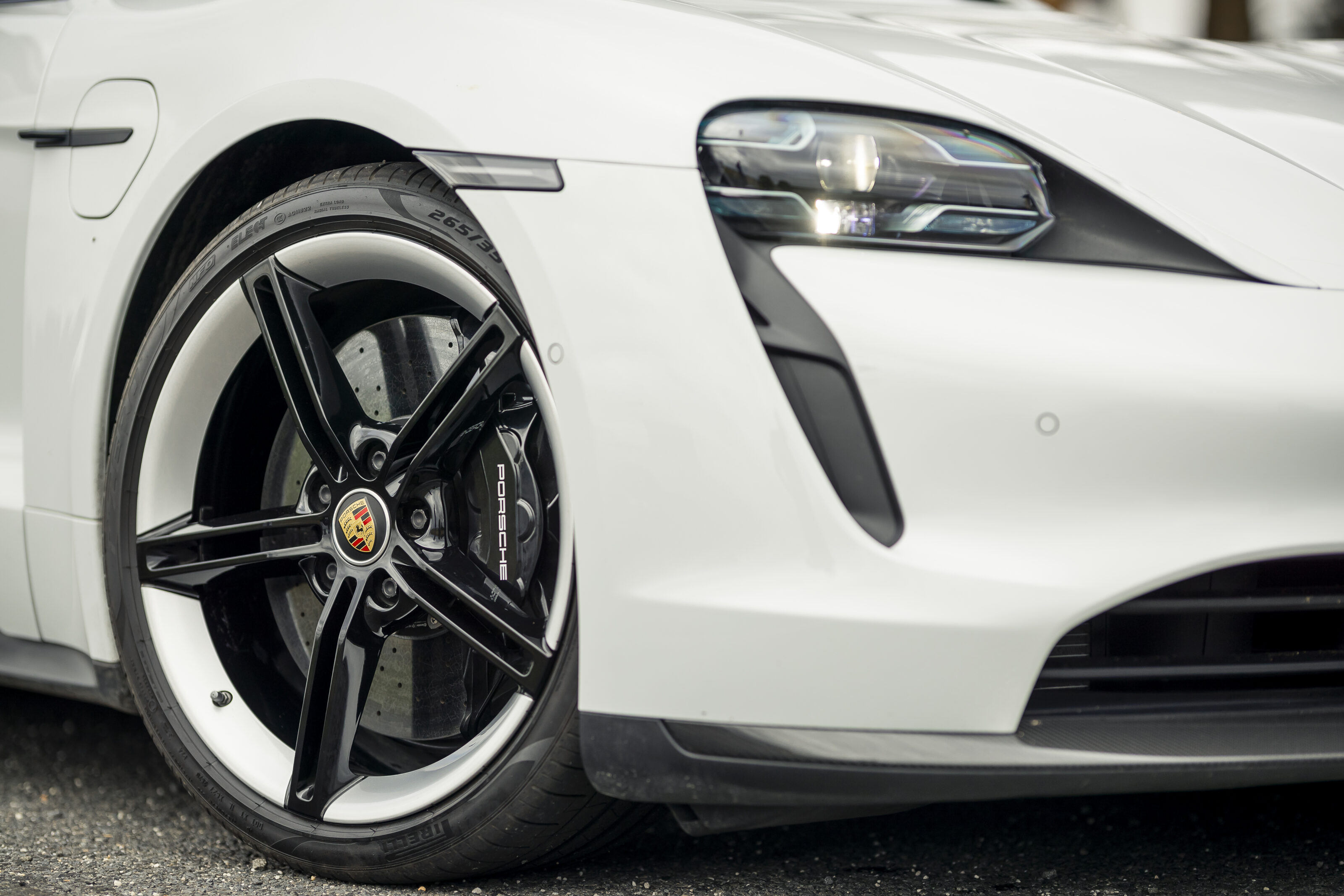
Those physics also need to be controlled laterally. Therefore Porsche has fitted expensive double wishbone front suspension with multi-links at the back combined with sophisticated air suspension and active anti-roll bars.
Essentially the Taycan Turbo S is constantly calculating how to best maintain cornering forces in the name of ultimate body control. It’s all in the name of making a Porsche EV still feel like a Porsche – despite having to deal with so much heft.
Luffy stated that it is a little tyre limited more than the Taycan’s chassis lacking mechanical grip. And with the bulk of the weight centrally located, it almost, and we mean almost, displays mid-engined characteristics. Helping the rear end remain stuck are 305-section P Zeros wrapping 11.5-inch wide 21.0-inch alloys.
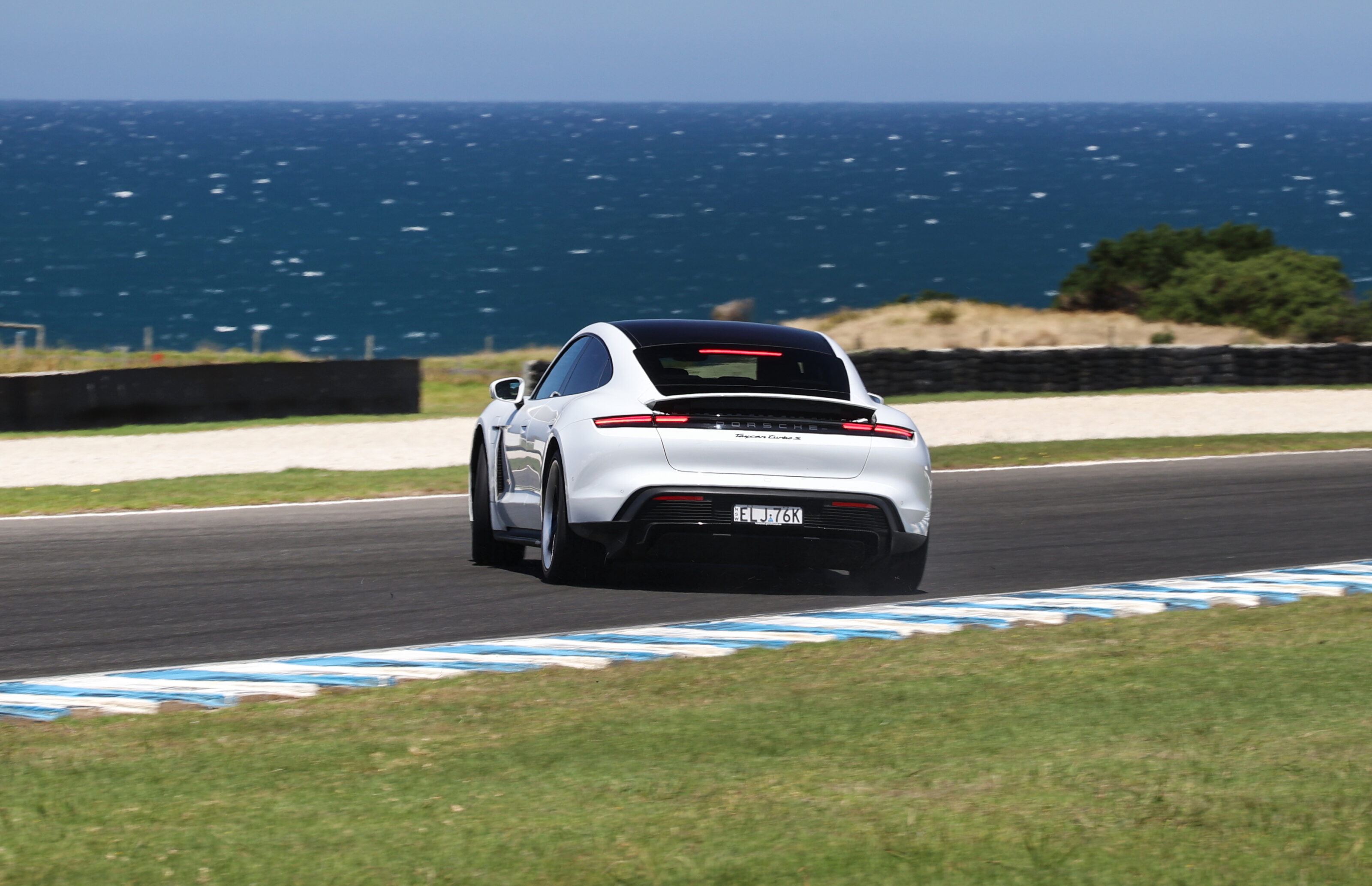
It makes gains over the likes of the BMW M3 on corner exit and, for example, reaches a top speed 11km/h higher out of Honda (Turn Four) on the approach to Siberia (Turn Five).
However, don’t think it’s overtly tied down, with Porsche’s Torque Vectoring Plus apportioning power and torque across the rear axle. Helping to shrink the 2900mm wheelbase is rear-steering, which can be a little harder to acclimatise to on road than it is on track. Surprisingly it’s actually quite easy, and controllable, to get a four-wheel drift happening.
A constant remark from the judges regarding the Taycan Turbo S was that it’s hard to discern what’s actually happening underneath you. The layman’s answer is ‘a lot’. And when you break it down, it’s clear that way of thinking rings true by the sheer computing might at play. Yet, there’s enough traditional Porsche in there to make it feel like a product straight out of Stuttgart.
We recommend
-
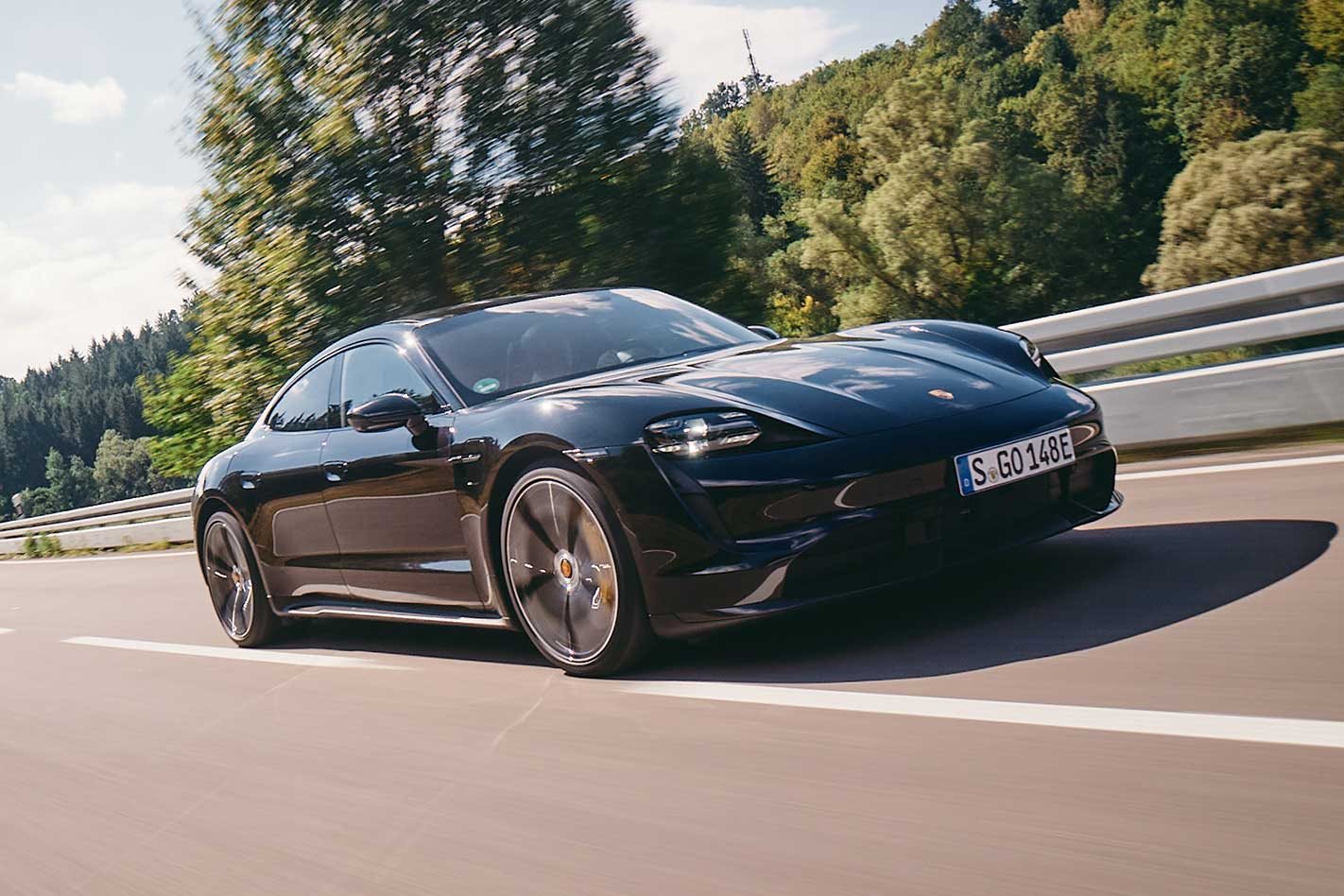 Reviews
ReviewsFirst drive: Porsche Taycan Turbo S
Exclusive first extended drive of Porsche’s first fully electric car, the new-age Taycan sports car
-
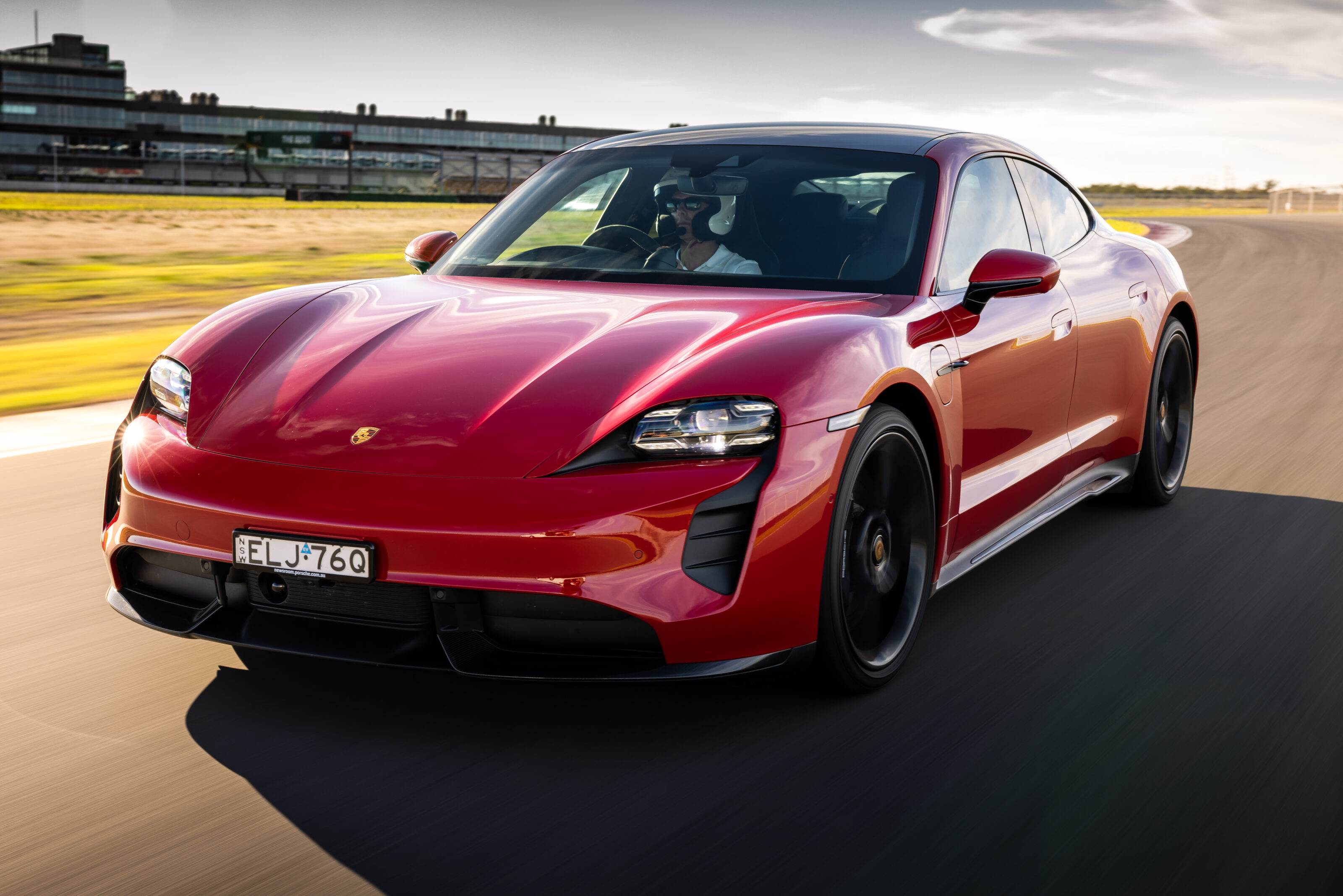 News
NewsPorsche Taycan lays down the gauntlet with EV record at The Bend
Porsche can stake claim to two lap records at The Bend after setting fastest times in the Taycan Turbo S and 911 Turbo
-
 News
News2025 New Car Calendar: All the new cars coming to Australia
Take a look at our list of what is expected to launch in Australia in 2025 – plus those we might not see locally just yet



